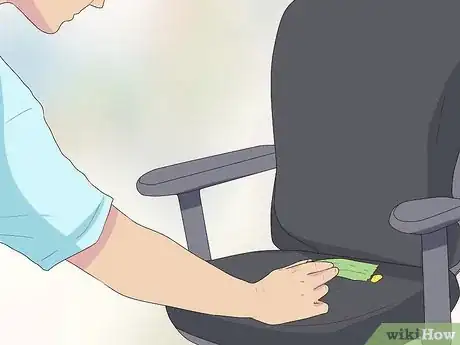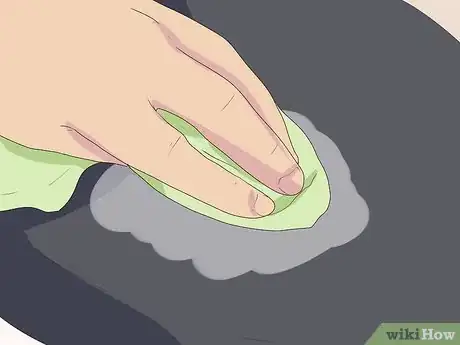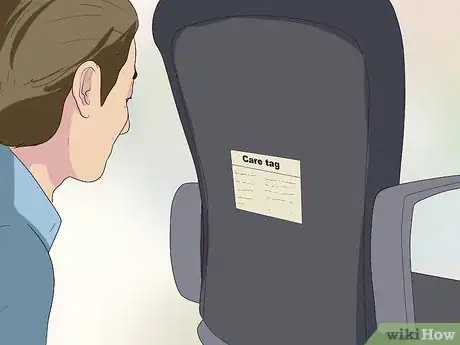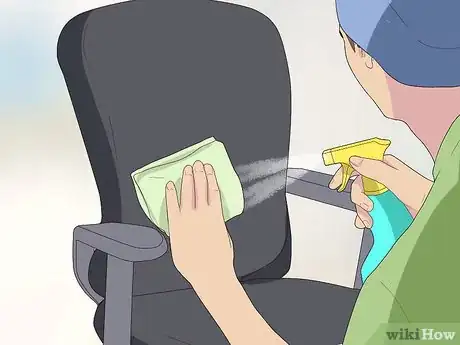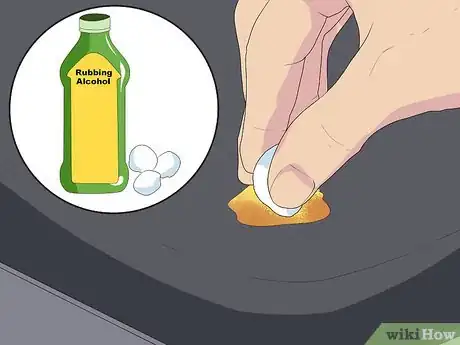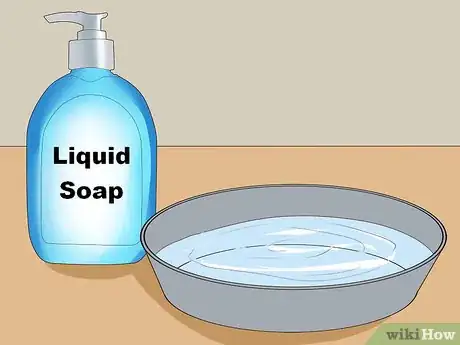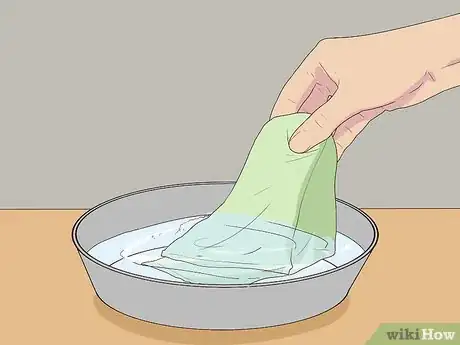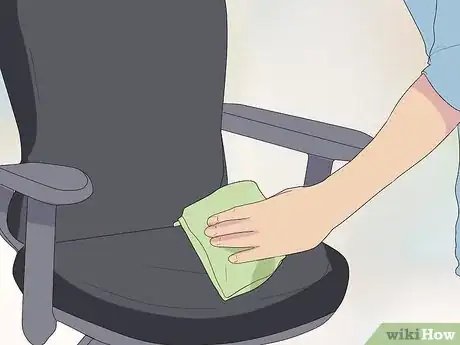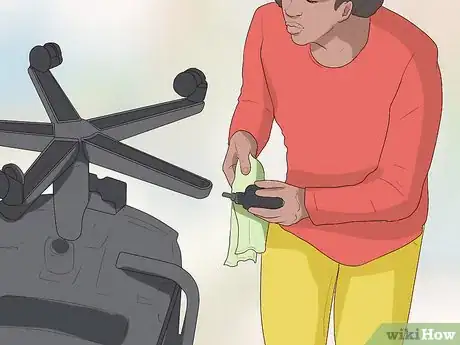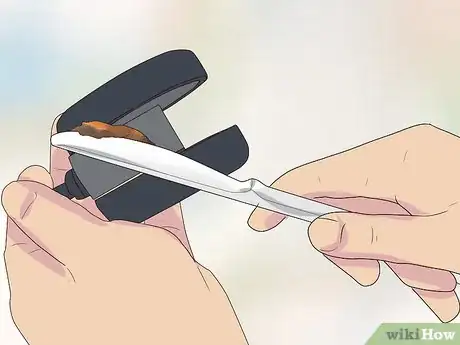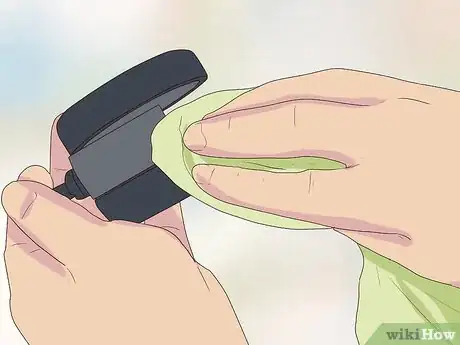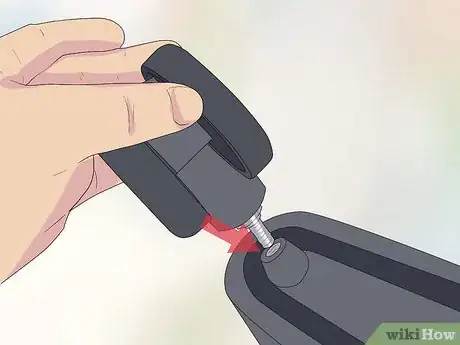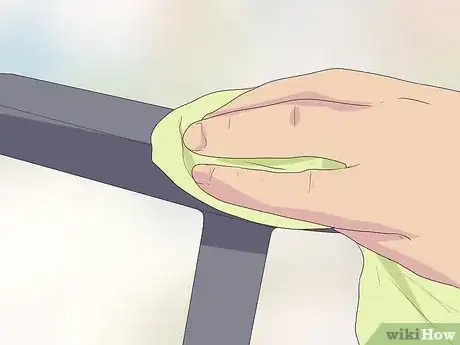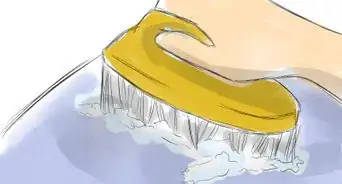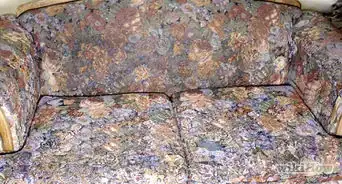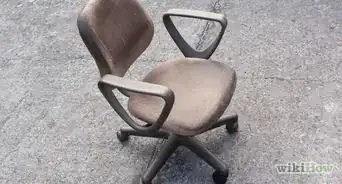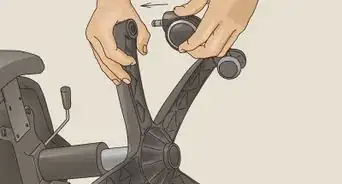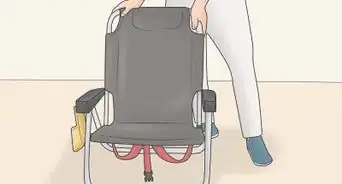This article was co-authored by Michelle Driscoll, MPH. Michelle Driscoll is the Owner of Mulberry Maids, which is based in Fort Collins, Colorado. With five years of experience, her business specializes in cleaning homes and small offices. She holds a Masters in Public Health from the Colorado School of Public Health. Additionally, Mulberry Maids has an A+ rating from the Better Business Bureau.
There are 8 references cited in this article, which can be found at the bottom of the page.
This article has been viewed 142,649 times.
Whether you work from home or in a cubicle, a desk job means you’ll be spending most of your day sitting in your chair. An occasional accident with food, ink, or drink is bound to happen, and you’ll surely have to clean it up. Over time, the upholstery might need general cleaning as well, and if your wheels don’t roll as well as they should, they might need cleaning as well.
Steps
Taking Care of Spills and Stains
-
1Pick up any loose debris. Use a paper towel to grab as much of the solid as possible and discard it in the trash. You may need to do this several times in order to completely remove the solid. If cleaning a chair with fabric upholstery, it’s important not to rub as you clean; you might force the solids into the fabric and make it more difficult to clean.
- It’s important to act as soon as you see the mess, so it doesn’t have time to set.[1]
-
2Blot liquids with a wet cloth. The faster you attend to a spill, the less likely it is to set and cause a stain. If you act quickly enough, you should just need to dampen a cloth or rag with water. Use it to sponge up as much of the liquid as you can. Wring out the liquid in a separate container or a sink, and keep blotting the spill until it’s gone.[2]Advertisement
-
3Check the care tag on your chair. This tag provides cleaning instructions directly from the manufacturer. If you see an S, you should only use solvent-based solutions to clean the chair. A W means you should use a water-based solvent, while an SW or S/W means either type of solution can be used.[3]
-
4Clean S-coded chairs with a dry cleaning solvent. Any product containing water could damage the upholstery. There are several brands of cleaners, and you should always check the instructions coming with the product. Some are in liquid form while others are powdered.
- In either case, you’ll want to apply a small amount of solvent to a dry cloth and blot up the stain.
- Make sure to use a damp cloth to wick away the solvent, otherwise it could leave a ring on your upholstery.[4]
-
5Wash W-coded chairs with a water-based solvent. Mix a mild dish soap with water and dampen a clean cloth with it. Blot the stain with the cloth. Be careful not to rub the stain, otherwise you may damage the upholstery, especially if it’s made of fabric or microfibers.[5]
-
6Remove stains with rubbing alcohol. Dampen a cotton ball with a few drops of rubbing alcohol. Test the alcohol on a small spot of the chair that’s out of view, such as the underside. If it doesn’t cause any damage, use the cotton ball to rub the stain.[6]
- Mesh upholstery tends to get frayed if rubbed too briskly. Make sure to be more gentle on these surfaces.[7]
- Don’t use rubbing alcohol on acrylic fabric upholstery.[8]
- Rubbing alcohol only has a small amount of water, and you may be able to use it on S-coded upholstery. If in doubt, apply a small amount of rubbing alcohol to a small, inconspicuous part of the upholstery. If there’s no damage, you should be able to use the rubbing alcohol.
Freshening up the Upholstery
-
1Vacuum up dirt and dust. Start with an upholstery attachment, which has a wide plastic end and a brush underneath. The brush is soft enough that it won’t scratch leather and vinyl upholstery. Pass the vacuum over the chair’s seat, back and arms.[9]
- After going over the upholstery with the upholstery attachment, you can use the crevice tool to cover areas that are harder to reach.[10]
- Make sure the suction isn’t too strong, as this could damage leather upholstery.
-
2Mix a solution of liquid soap and water. Use a natural, biodegradable dish detergent as your soap. Make sure to test the solution on a small, inconspicuous part of the upholstery; this is the only way to be absolutely sure the solution won’t damage it. Depending on what the upholstery is made of, the makeup of your solution will vary.
- For fabric, vinyl, or leather upholstery, mix a few drops of soap with 1 cup (240 mL) of water.[11]
-
3Dip a rag in your cleaning solution and wipe down the upholstery. Make sure you use a clean, lint-free cloth. Dampen your rag rather than soaking it; you don’t want to leave an excess of cleaning solution on the upholstery. Be careful not to rub or scrub, as this could fray mesh or scratch leather.[12]
-
4Wipe the upholstery with a dry cloth. Wipe away any water or soap residue, then allow the chair to air dry. Keep the chair in a well ventilated area. This will allow it to dry faster.[13]
Cleaning the Wheels, Arms, and Legs
-
1Flip the chair upside down and remove the wheels. You might find it easier to work if you’re seated in a different chair. You’ll avoid being continuously bent down, which will save your back. Some wheels pop off just from pulling, while others may require the use of a screwdriver.[14]
-
2Use a butter knife to scrape off large debris. Whether it’s dried food, gunk or even small pebbles, any of these can hinder your office chair’s movement. The butter knife can slip into the crack between the wheel and its cover, allowing you to scrape off or pop out any debris stuck in the wheel.
- If there are hairs stuck in the wheel, cut them with scissors them use tweezers to remove them.[15]
-
3Wipe the wheel with a dry cloth. This should take care of any mess you can’t scrape off with the butter knife. If the wheels are particularly dirty, dampen your cloth and add a few drops of dishwashing soap.
- If you need to clean between the wheel and the cover, you can use a cotton swab moistened with water to clean along the crack.[16]
-
4Use paper towels to dry the wheels. Any moisture left on the wheel will prevent it from rolling smoothly. Wipe the wheel thoroughly with paper towels, especially if you used soap.[17]
-
5Place the wheels back on the chair and flip it back over. Your chair should now roll much more smoothly. If the wheels have screws, remember to screw these back in before sitting in the chair.[18]
-
6Wipe down chair arms and legs with a damp cloth. Since these parts are usually plastic or metal, they’re much easier to clean than the chair’s upholstery. Wiping them with a damp cloth will usually be enough to clean them. If the spill is a bit more tenacious, use a mild solution of water and dish soap.
- After cleaning, wipe the arms and legs dry with a clean, dry cloth.
Warnings
- Before using any type of cleaning solution, apply it to a small, inconspicuous part of the chair. That way, you’ll know for sure if it’s safe to use.⧼thumbs_response⧽
References
- ↑ https://www.servicemasterclean.com/blog/commercial-clean/how-to-clean-an-office-chair
- ↑ http://blog.officechairsonsale.com/2014/05/how-to-clean-your-office-chair.html
- ↑ https://www.servicemasterclean.com/blog/commercial-clean/how-to-clean-an-office-chair
- ↑ http://www.stain-removal-101.com/upholstery-dry-cleaning.html
- ↑ http://www.apartmenttherapy.com/tips-tricks-for-spot-cleaning-upholstery-apartment-therapys-home-remedies-201674
- ↑ https://www.ifixit.com/Wiki/Stain_Removal
- ↑ https://www.btod.com/blog/2014/11/05/grime-scene-your-go-to-guide-for-cleaning-your-favorite-furniture/#crypton
- ↑ https://housekeeping.wonderhowto.com/how-to/remove-almost-any-stain-using-alcohol-0162008/
- ↑ https://www.btod.com/blog/2014/11/05/grime-scene-your-go-to-guide-for-cleaning-your-favorite-furniture/#crypton
- ↑ https://www.servicemasterclean.com/blog/commercial-clean/how-to-clean-an-office-chair
- ↑ https://www.btod.com/blog/2014/11/05/grime-scene-your-go-to-guide-for-cleaning-your-favorite-furniture/#crypton
- ↑ https://www.btod.com/blog/2014/11/05/grime-scene-your-go-to-guide-for-cleaning-your-favorite-furniture/#crypton
- ↑ https://www.btod.com/blog/2014/11/05/grime-scene-your-go-to-guide-for-cleaning-your-favorite-furniture/#crypton
- ↑ https://www.overstock.com/guides/how-to-clean-the-wheels-of-a-rolling-office-chair
- ↑ https://www.overstock.com/guides/how-to-clean-the-wheels-of-a-rolling-office-chair
- ↑ https://www.overstock.com/guides/how-to-clean-the-wheels-of-a-rolling-office-chair
- ↑ https://www.overstock.com/guides/how-to-clean-the-wheels-of-a-rolling-office-chair
- ↑ https://www.overstock.com/guides/how-to-clean-the-wheels-of-a-rolling-office-chair
About This Article
To clean an office chair, start by vacuuming the dirt and dust with an upholstery attachment. Then, mix a solution of liquid soap and water, dip a rag into it, and wipe the upholstery down. If you're dealing with a spill or stain, start by picking up any solid material, then blot liquids with a cloth dampened with water. For a more stubborn stain, rub it with a cotton ball dampened with a few drops of rubbing alcohol. To learn how to clean the wheels, arms, and legs of an office chair, keep reading!
